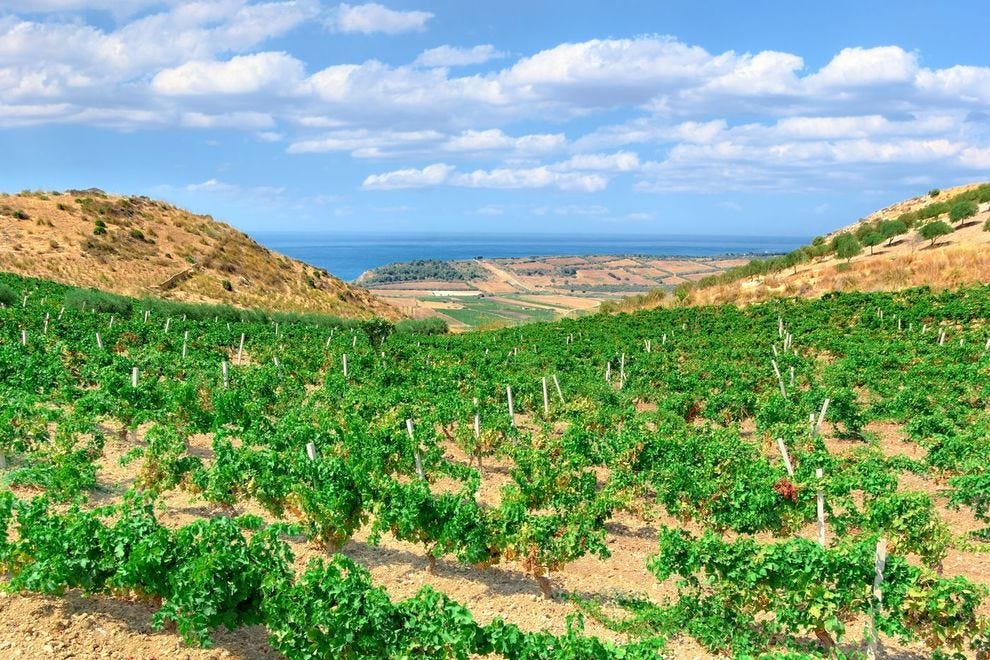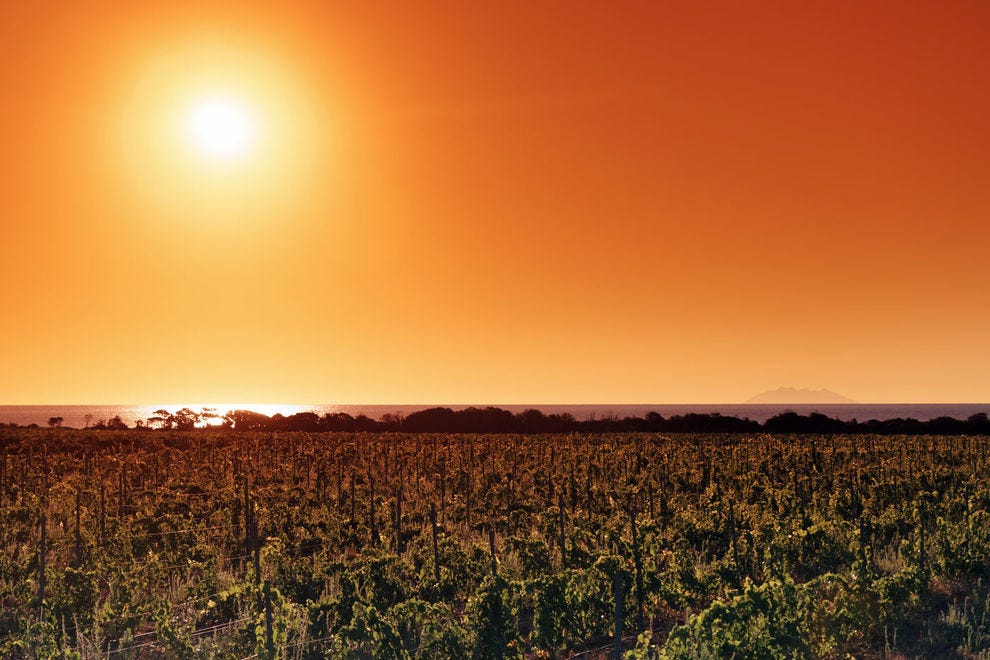How some of the best wine is made on European islands
Some of Europe’s most interesting wine regions are islands – environments and cultures that are preserved by a frame of sea. From the shores of Sicily to the coasts of Corsica, you’ll find gorgeous seaside vineyards producing unique, top-shelf wines.
Get to know five of these tempting island wine regions.
Santorini
 Basket-shaped vines on Santorini — Photo courtesy of iStock / pkazmierczak
Basket-shaped vines on Santorini — Photo courtesy of iStock / pkazmierczak
On the Greek island of Santorini, growers cultivate assyrtiko grape vines into low-to-the-ground basket shapes called koulara, a method designed to shelter the fruit from strong island wind and sun. This distinctive approach is based on the know-how of a region with thousands of years of wine-growing history.
Volcanic eruptions are the source of this striking land, as well as the vineyard terroir. Grapes are moistened from sea fog which rolls in at night, while a revitalizing wind called meltemia keeps the plants fresh and limits disease.
The stunning beauty of Santorini attracts visitors from around the world, many of them unaware of efforts to balance small-scale family winemaking with the economics of a growing tourism environment.
Sicily
 Vineyards by the sea in Sicily — Photo courtesy of iStock / ollirg
Vineyards by the sea in Sicily — Photo courtesy of iStock / ollirg
Sicily, the largest island in the Mediterranean Sea, fascinates visitors with vineyards planted in the shadow of one of Earth’s most active volcanoes, Mount Etna. The 3,000-year-old island has a winemaking culture that dates back to the Greeks.
Native grape varieties such as grillo and nero d’avola are flagships. With an eye toward authenticity, many growers are reaching back in time, populating vineyards with ancient grapes such as catarratto, inzolia and frappato rather than international varieties that had previously watered down the fidelity of Sicilian wine.
Corsica
 Vineyards on the coast of Corsica — Photo courtesy of iStock / benslimanhassan
Vineyards on the coast of Corsica — Photo courtesy of iStock / benslimanhassan
Corsica, a French island with nine protected wine-growing areas, has a Mediterranean atmosphere with a continental climate – mountain snow in the winter and sultry heat in the summer. The island is full of diverse earth, comprised of various soils including limestone, clay, volcanic, sandstone and granite.
Wind carves the setting as the fabled mistral blows from the north and the sirocco builds steam from the south. Vermentinu (also known as vermentino or rolle) and nielluccio are the primary grapes here, with the Phoenicians credited for cultivation of vermentinu in antiquity.
Similar to the hillside flora found in the south of mainland France, here terroir is peppered with maquis, an herbal mashup that delivers aromatics to the wine. The bottom line on Corsica is that there is no bottom line, rather an undulating wave of influences that makes this island utterly unique.
Hvar
 Waterfront vineyard on Hvar — Photo courtesy of iStock / BettinaRitter
Waterfront vineyard on Hvar — Photo courtesy of iStock / BettinaRitter
Hvar is a Croatian island off the Dalmatian Coast and an ancient port in the Adriatic Sea. Hilltop villages anchor the wine-growing region, with vineyards stapled to surrounding hills and valleys. The ancient Greeks led the winemaking way, and now the island is stitched with low stone walls and terraces delineating various growing regions.
Bogdanusa, which translates to ‘gift from God,’ is a grape native to the island, and plavac mali, a Dalmatian relative of zinfandel, thrives here in some of the variety’s oldest plantings.
Lanzarote
 The unique vineyards of Lanzarote — Photo courtesy of iStock / Eloi_Omella
The unique vineyards of Lanzarote — Photo courtesy of iStock / Eloi_Omella
Lanzarote is a Canary Island located about 80 miles off the west coast of Morocco. After a devastating volcanic eruption in the 1700s caused inhabitants to rethink farming methods, they turned to wine grapes which thrive in the ashy soil.
The malvasía volcánica grape is the hometown variety, and black soil vineyards are a series of hollowed-out nooks which are horseshoed by a shelter of stone bricks. The low profile protects the plants from drying out in the wind. One after the next, these widely spaced vines look like fish scales systematically sliding along the landscape.



